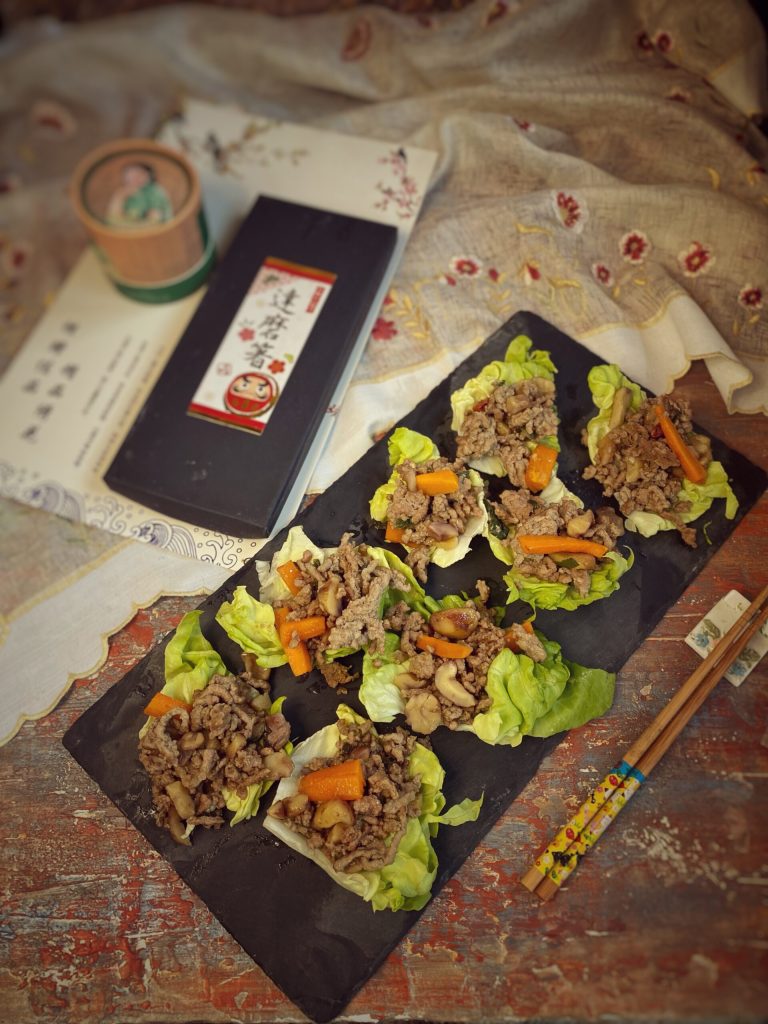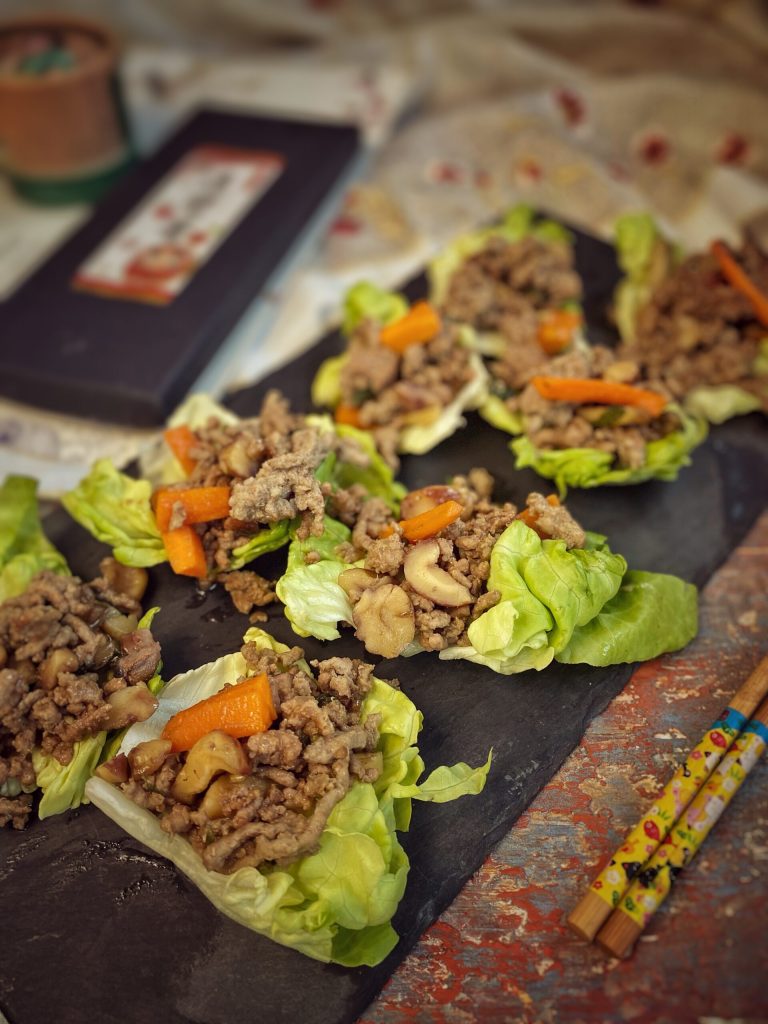The San choy bau is believed to have originated in Guangzhou.
“Sangchoi” means lettuce in Chinese, and it sounds similar to “to become rich” in Chinese.
However, information about the dish is scarce and conflicting, even regarding the spelling of its name … San Choy Bow, san choy boa, sang choi bau…
It consists of ground pork, vegetables, and chopped water chestnuts served with a sauce made of soy sauce and oyster sauce, on fresh lettuce or iceberg leaves.
Beef or chicken can also be used.

- Difficulty: Easy
- Cost: Economical
- Preparation time: 5 Minutes
- Portions: 4 People
- Cooking methods: Stovetop
- Cuisine: Chinese
- Seasonality: All seasons
Ingredients
- 1.1 lbs ground pork
- 1 onion
- 2 cloves garlic
- as needed ginger
- 1 carrot
- 2 chilies
- 5.3 oz water chestnuts
- 5 Shitake or Shiitake mushrooms
- 3 tbsps oyster sauce
- 2 tbsps soy sauce
- 2 tsps cornstarch
- as needed sesame oil
- as needed lettuce (or iceberg)
Steps
For the sauce: mix 1/4 cup of water with soy sauce, oyster sauce, and cornstarch.
In a wok, sauté the onion and garlic in sesame oil, add the ginger and meat.
Soak the mushrooms in boiling water. Chop the vegetables and chestnuts and add to the meat with the chili.
Add the sauce and simmer for a few minutes.
Serve on lettuce leaves either hot or cold.

FAQ (Questions and Answers)
What are water chestnuts?
Contrary to what the name suggests, Chinese water chestnuts are not fruits or seeds, but rather the bulbous roots of a marsh plant whose underwater rhizomes anchor in the mud.
They are the edible rhizomes of a herbaceous plant typical of Asia (China, Japan, India, Philippines, etc.), Australia, tropical Africa, certain Pacific islands, and others in the Indian Ocean.
From the Trapas natans family, it is an annual, aquatic, and floating species, growing in slow-moving waters up to 5 m deep.
They are small and rounded; the skin is glossy brown, while the flesh is white and crunchy in texture.
Chinese water chestnuts can be consumed raw, lightly boiled, or grilled, and are sometimes preserved loose in brine or sealed in jars.
The culinary use of water chestnuts is similar to that of mountain chestnuts.
In Italy, the plant is especially common in the lakes of Mantua, where the fruit, edible, is known locally as trìgol (trìgoi in plural).

